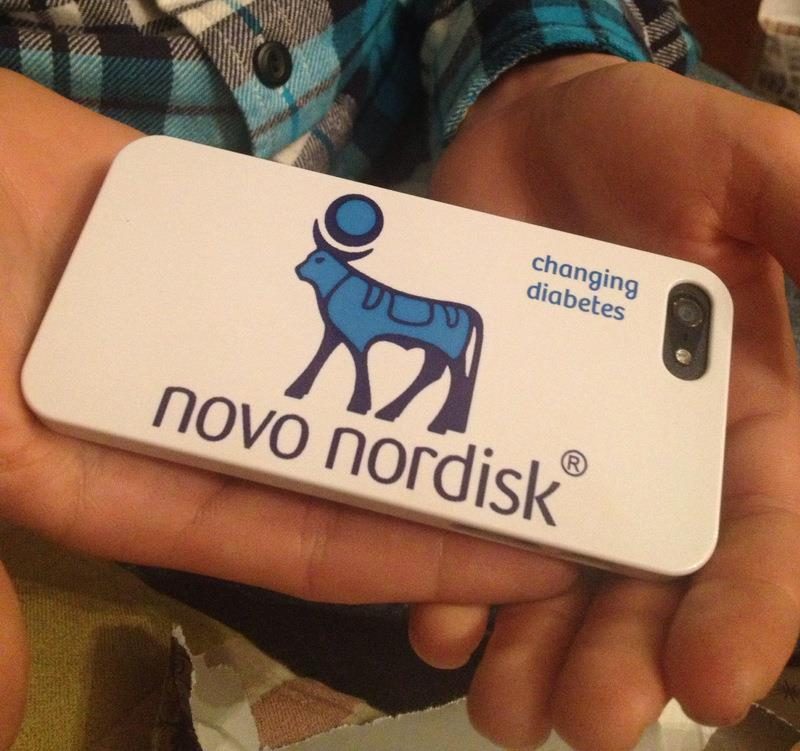
A signing which caught our eye was that of 20 year-old Irishman Stephen Clancy, joining Phil Southerland’s Team Type 1 Pro Continental squad.
Last season the team took some big wins; notably ‘Philly’ – the Philadelphia International Championship, the USA’s biggest one day race where the spectators are measured in tens of thousands.
The team took some 20 UCI wins all told, from the Tour of Limousin to the Tour of Korea.
Whilst TT1 had a percentage of riders suffering from the disease which gave the team its name, head honcho – and diabetes sufferer – Phil Southerland has taken things even further for season 2013.
The likes of big sprinting Alexander Serebryakov and Aldo Ilesic have been let go and all of the riders on team are now diabetic.
But Southerland has retained the squad’s Pro Continental licence as well as gaining a new sponsor – Novo Nordisk, a Danish pharmaceutical company with a particular focus on diabetes care equipment and medication.
We duly caught up with Stephen, and here’s his story.
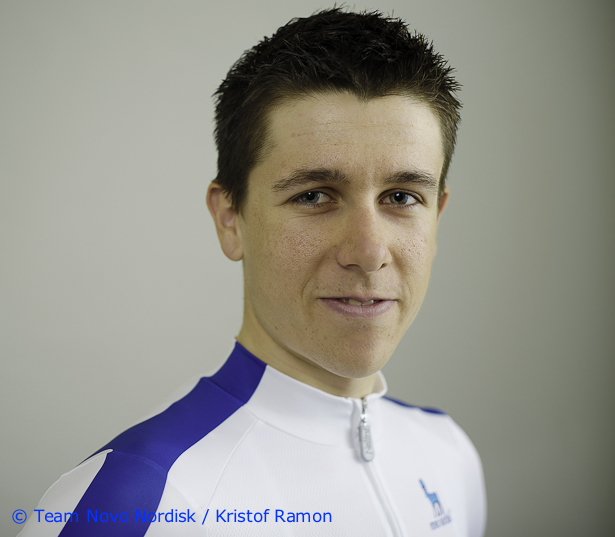
How did you get the contract with Novo Nordisk?
“I was invited to train and race with the team’s development squad in Atlanta for just over three weeks back at the end of August.
“This allowed me to get to know all the great people involved in the setup along with showing the team what I was capable of.
“They must have seen something that they liked because before I left to fly back home to Ireland I had put pen to paper on the contract with Team Novo Nordisk.
“It was a dream come true.”
Have you met the sponsors yet, do you know much about the company?
“Yes I have, luckily at our December training camp in Alicante we got to meet some of the people behind Novo Nordisk as well as learn about the company itself.
“It was a great experience; hearing from Jakob Riis (senior vice president, Global Marketing and Global Medical Affairs) about the excitement they have about this partnership is just fantastic.
“It is a match made in heaven, with both organisations having the common goal of “Changing Diabetes”.
“It’s fascinating to learn how they have been involved in the development of the insulin which keeps us alive today, for over 90 years.
“And it’s is wonderful how together we are going to be able educate, empower and inspire everyone in the world who is affected by diabetes.
“The support they have given us is phenomenal and will allow us to do what no other team does, and that is save lives.”
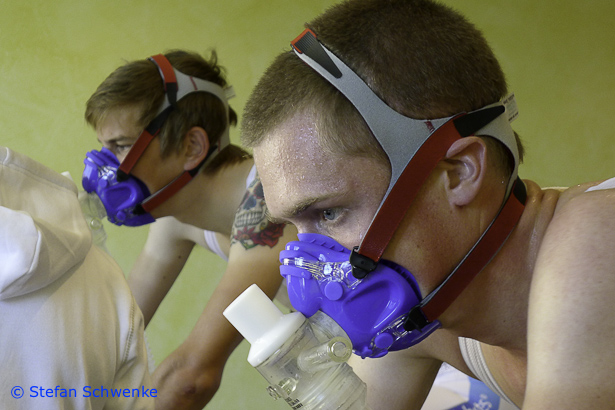
How did the Alicante camp go – how did your fitness match up to the others?
“It went really very well!
“It was a busy and exciting two weeks.
“While we did get to train every day in the lovely Spanish weather – which beats the cold, wind and rain in Ireland any day and we had plenty more interesting things to do to keep us occupied.
“Such as getting to know the huge team involved, physiological testing, photo and video shoots, medical and nutritional talks along with the inspirational speeches which team founder Phil Southerland always seems to provide.
“Fitness wise it is still difficult to gauge seeing as some are coming off the back of injuries, some are just finished the Tour of Rwanda and some are heading into the Australian Nationals, but considering that I’m pleased with the level I am at now.”

Who’s the ‘joker’ on the team?
“It has to be the Aussies!
“They seem to keep the laughter and smiles going the whole time with their fun and games it is brilliant.”
And who’s the ‘Capo’ – main man?
“We’ll have to see.
“A lot depends on who is going well throughout the year, and who is most suited to the race at hand.
“The same as most teams I suppose.”

Colnagos – nice machines; tell us about them, how many do you get?
“They are lovely pieces of kit.
“They’re rock solid and I couldn’t ask for more from a bike.
“Right from the moment I sat up on mine for the first time I felt at home.
“The Shimano components they are kitted out with really put the icing on the cake.
“We’re lucky enough to have a time trial, racing and training bike from Colnago, all of which grab peoples’ attention with their stunning looks.”
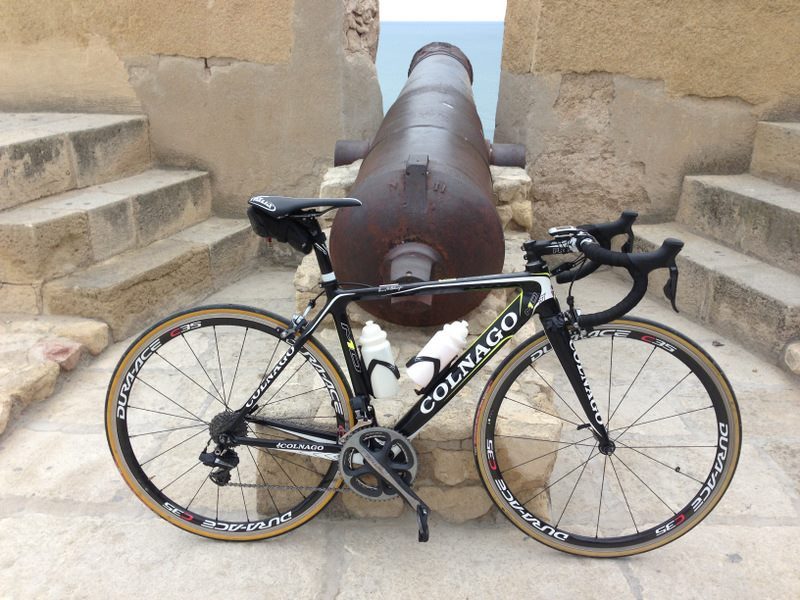
White kit – hard work is it not?
“At times it can be, especially training in Irish weather!
“But I think it looks very well and more importantly it will stand out in the peloton and get our message of “Changing Diabetes” across to the viewers very well in my opinion.”

Has your 2013 programme been discussed, yet?
“To a certain extent it has, but nothing is definite just yet.Photo©Stephen Clancy.
“One thing is for sure and that is that there will be some big races on the calendar for the team in 2013.”
Has the team given you an indication of what they expect from you?
“Well aside from 100% commitment, helping the team in any way possible and following team orders is what I’ll be aiming to do.
“It’s still early days for me yet to see how I adapt to this level of racing at such a young age, so we’ll have to see as the season goes on what is expected of me.”
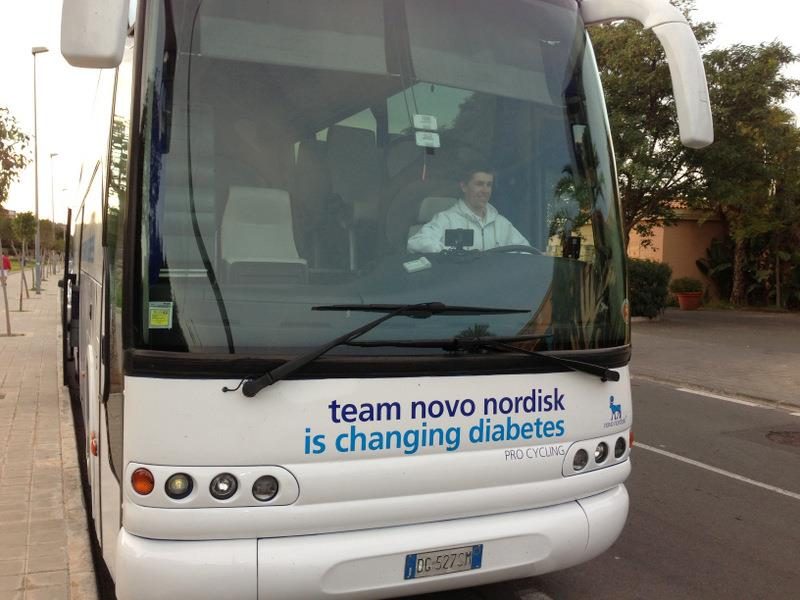

Tell us about being a pro cyclist with Type 1 Diabetes – the differences from being a rider who doesn’t have it.
“It’s a very interesting combination.
“Cycling is one of the most difficult sports and diabetes is one of the most difficult diseases to manage. I don’t like calling it a disease actually, I prefer to see it as a ‘condition’ because once it is managed correctly it won’t stop you living a perfectly normal and exciting life.
“Just look at Team Novo Nordisk, we are living proof that anything is possible with diabetes. The difference between me and a non-diabetic rider is simple. I constantly need to check my blood sugar levels and taken insulin every day.
“I still need to eat the same kind of foods, do the same training and have the same amount of rest. We just need to be more aware of the effect which exercise has on our glucose levels, as well as being able to understand every piece of food we eat and the effect it will have on our bodies. We have no other choice really, but as a result we are more conscious of how our body works and treat it with respect which can only be a good thing!
“Luckily technological advancements have made it easier for us to keep everything under control. The team provided us with CGMs (continuous glucose monitors) which give us a live reading of our sugar levels. This is massively beneficial and means we don’t have to prick our fingers and test the little blood drop while on the bike (I remember doing this once in a race and a guy thought I had taken out my phone to make a call or text!).
“We need to check because our body does not produce insulin naturally. So to be able to perform and have a better quality of life, we need to care about our sugar levels. These rewards are good motivation to keep them under control.
“The rewards apply for all diabetics too, even if they are not competing at such a high level. Just regular exercise would be a good place to start.
“Cycling for me is just as important as my insulin for managing my diabetes.”
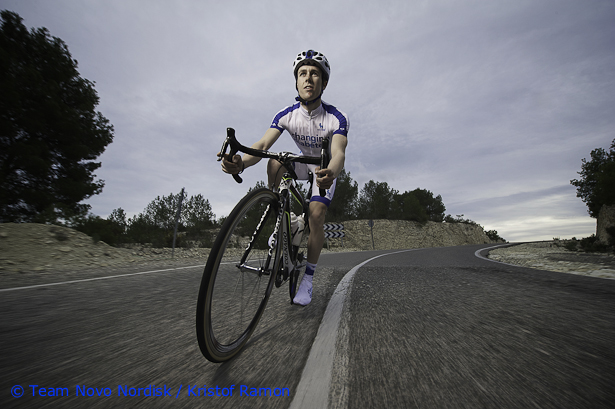
Do you need much more rest, for example?
“The simple answer is, ‘no.’
“We need just the same amount as anyone else.”
And can you eat what your family eats at meal times?
“I can to a certain extent, but there are some things which just wouldn’t be ideal for me to eat.
“Most people think we just need to stay away from sugar, but it is any carbohydrates at all which raise our blood sugar levels so even things like your pasta, bread, rice, cereal and so on.
“Some just spike our sugar levels faster than others, so we need to be aware of this and calculate our correct insulin dosages by counting the carbohydrates in our meal, often just by looking at a plate when there are no nutritional labels available.”

Which riders inspired you as a youngster – and why?
“Of course, being from Ireland, legends like Sean Kelly and Stephen Roche inspired me when I was young, but their successes came before I was even born.
“More recently it has been all the individual inspiring stories I have heard from my team mates that has kept me going.
“Looking back to when I was first diagnosed with Type 1 Diabetes in March 2012, it was my awareness of Team Type 1 and reading Phil Southerland’s powerful story in his book “Not Dead Yet” that gave me the motivation to not let diabetes get in my way.”
What’s the Irish domestic race scene like?
“It’s good.
“There are lots of good races on the calendar like the An Post Rás which always attracts many big teams from abroad, along with many other races too.
“The standard is quite high, and growing in numbers massively in recent years.
“Unfortunately it seems that if you want to progress through the ranks and get noticed by teams, it often means moving outside of Ireland.”
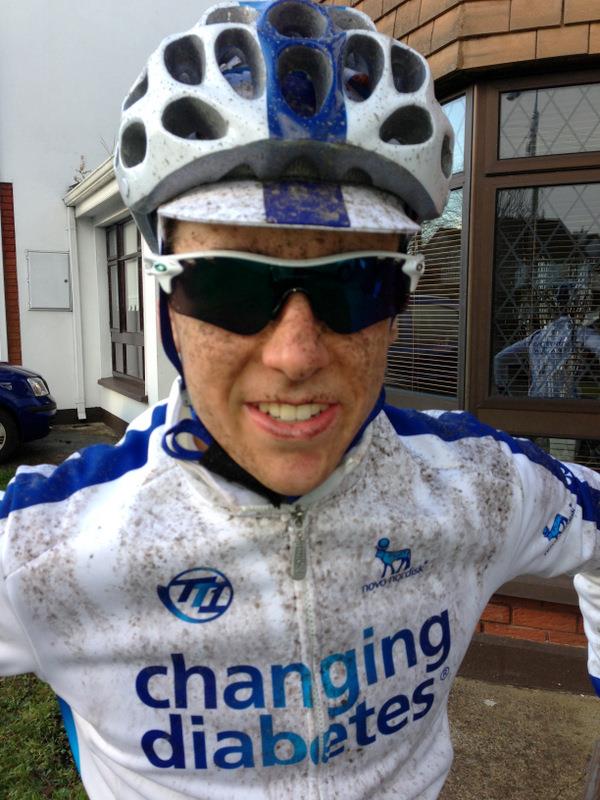
You were Irish cyclist of the year in 2011 – that’s quite an honour.
“Yes, I was thrilled to be the recipient of such a nice award.
“It meant a lot to me, and showed that the progressions I made in that year were acknowledged by Irish cyclists.
“I must have a few fans out there who voted for me! So thanks.”
What’s the highest level you’ve raced at until now?
“I’ve raced some of the big stage races in Ireland which attract teams from many countries each year such as Rás Mumhan, Tour of Ulster and the Suir Valley 3 Day International Stage Race.
“When I was in the US last year on trial it was the men’s Pro 1/2 category races I was doing, so the races this year will certainly be at a much higher level for me.”

Do you have a coach – what’s your training philosophy?
“Yes, the team have provided me with an excellent coach who I am very happy with.
“I have always liked to have a very specific plan to follow and that is exactly what I have now. This year the team are taking a very scientific approach to training to facilitate us reaching our potential.
“For this the whole team and staff are as good as you can get.
“Furthermore, sponsorship from Stages Cycling power meters and use of software such as Training Peaks for data analysis means I can only go in one direction and that is to improve!”
What do you think of the Lance mess?
“It’s an unfortunate situation that cycling finds itself in at the moment. Fans have lost some faith in performances but I am delighted with the new stricter anti-doping measures which are in place to combat this.
“Team Novo Nordisk even has its own internal zero tolerance policy so this will inevitably have a positive effect on the sports credibility.
“It’s about time we see a positive message coming out of cycling and I believe this team will be able to help turn things around and do just that. We are going to be sending out a message to the world, changing people’s perception of diabetes from what you can’t do to what you can do.
“Through our partnership with Novo Nordisk we are going to change the lives of millions of people with diabetes.
“It’s time to look forward to 2013 and ‘Changing Diabetes’.”
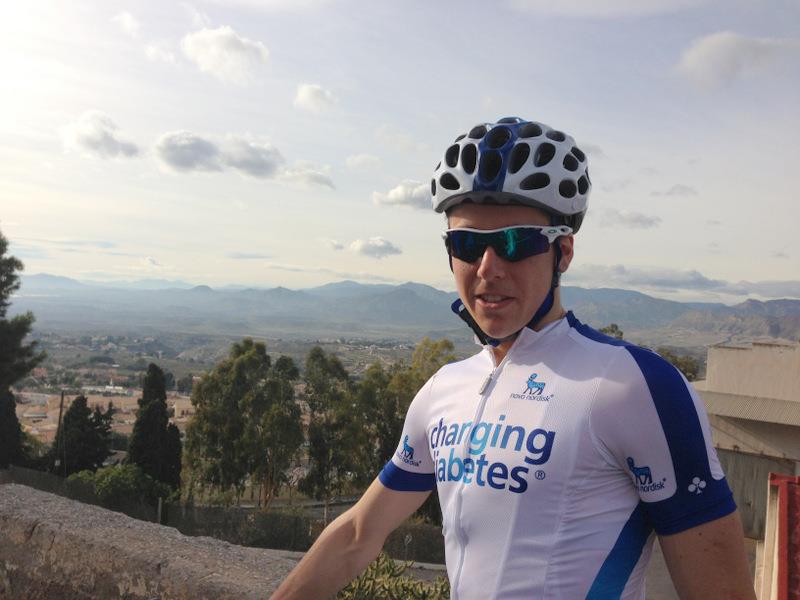
Photo©Stephen Clancy.
What goals have you set yourself for 2013?
“Personally I am looking forward to adapting to this new higher level of racing. I haven’t set myself many goals other than to be competitive at this standard and help my team mates whenever possible.
“I also have a goal of learning more about my diabetes as I was only diagnosed less than one year ago.
“I want to continue to improve my control over my condition and also continue to improve as a cyclist.”
Thanks to Stephen, Stefan Schwenke and Kristof Ramon for the photos.



